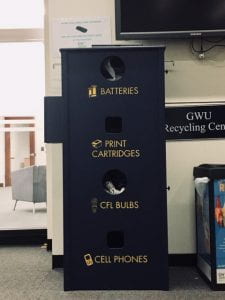5G is on its way. The fifth generation cellular network technology is primed to be ridiculously fast - fast enough to change the way you go about your daily life.
Today, the top corner of your phone screen probably says 3G, or 4G LTE, and these are symbols that stand for the different generations of broadcasting technology. 1G, or first generation, gave us the ability to make calls, 2G allowed us to send and receive messages, 3G let us access the internet, and 4G made accessing the internet markedly faster. LTE is a classification used to symbolize signal connection speeds in between 3G and 4G.
The speeds of these connections are partly measured in something called latency, which marks the time it takes for information to travel from one area to another. As the fastest widespread broadband, 4G boasts a latency rate of 300 milliseconds. This is remarkable, as the average human reaction times between 200 and 300 milliseconds. At best, human reaction time is only slightly faster than the time it takes for a device to retrieve information from a host on 4G.
5G, on the other hand, as some engineers have stated, will have a reaction time around one millisecond. Almost instantaneous. This is why when 5g reaches peak connectivity and is introduced to the world, it will allow for a new age of technology. Things like self driving cars and augmented reality become not only plausible, but markedly better alternatives to what exists today. A one millisecond delay time means an almost instantaneous reaction to a possible collision in a 5G self-driving vehicle, which would hypothetically reduce the amount of death and injury every year from car accidents substantially. It also means technology like virtual reality will be experienced in near real-time. While all of this promises to alter the way in which we experience the world around us, it also guarantees that many of the devices that we use today will quickly go obsolete.
In this fast-paced age of technology, the newest and most advanced products seem like a necessity for our everyday lives. As the Bureau of Economic Analysis reports, Americans spent almost 71 billion dollars on telephone and communication technology in 2017, which is five times more than they spent in 2010 even when adjusted for inflation. Technological corporations have been feeding into this ‘newer is better’ model, reducing the lifespan of a device and regularly unveiling newer, more advanced devices and enticing consumers with discounts for upgrades. This sort of mentality is great for profit, but produces a large amount of electronic waste, which is much harder to recycle than plastic or paper.
Electronic waste can not be simply placed in a recycling bin because the precious metals hidden inside these products can be flammable or radioactive. They must be sent to specialized recycling centers that focus on taking apart technological devices and salvaging parts that can be used in making future electronics. Because of this difficulty, most obsolete technological parts end up incinerated or in landfills.
With the introduction of 5G, this is only going to get worse. As Alana Semeuls of TIME magazine reports, electronics waste is the fastest growing solid waste stream in the world, and it will “turn into a torrent as the world upgrades to 5G”. E-cycling facilities forecast an explosion of the number of devices in the waste stream and are preparing to expand their capacity in order to meet these demands. However, these devices will never reach their facilities if they are not disposed of properly. At this time, more than ever, the GW community should turn its attention to the blue e-waste collection towers located throughout the campus. The university has contracted eAsset Solutions, a recycling center located in Falls Church to pick-up and recycle any technological parts placed in these collection towers, which are pictured below:

There are eight collection towers located across the three main GW campuses:
- Marvin Center (Ground Floor next to elevator)
- Science and Engineering Hall (1st Floor West)
- Gelman Library (Basement Level 2).
- Shenkman Hall (1st Floor Elevators)
- Thurston Hall (Mail Boxes)
- West Hall @ Mount Vernon Campus (Lower Level 1)
- District House (Level B-1 on H Street side near restrooms)
- Enterprise Hall @ VSTC (Loading Dock)
Electronic recycling is only a short-term solution, as technological companies rapidly increasing the rate of obsolescence has accelerated the rate of resource depletion to something completely unsustainable and detrimental to our environment. Until companies like Apple and Amazon feel pressure from their consumers to create more long-lasting products, e-waste will continue to pollute nature at an alarming rate. Today, all we can do is dispose of electronics in a smart and safe way in the wake of 5G technology.
